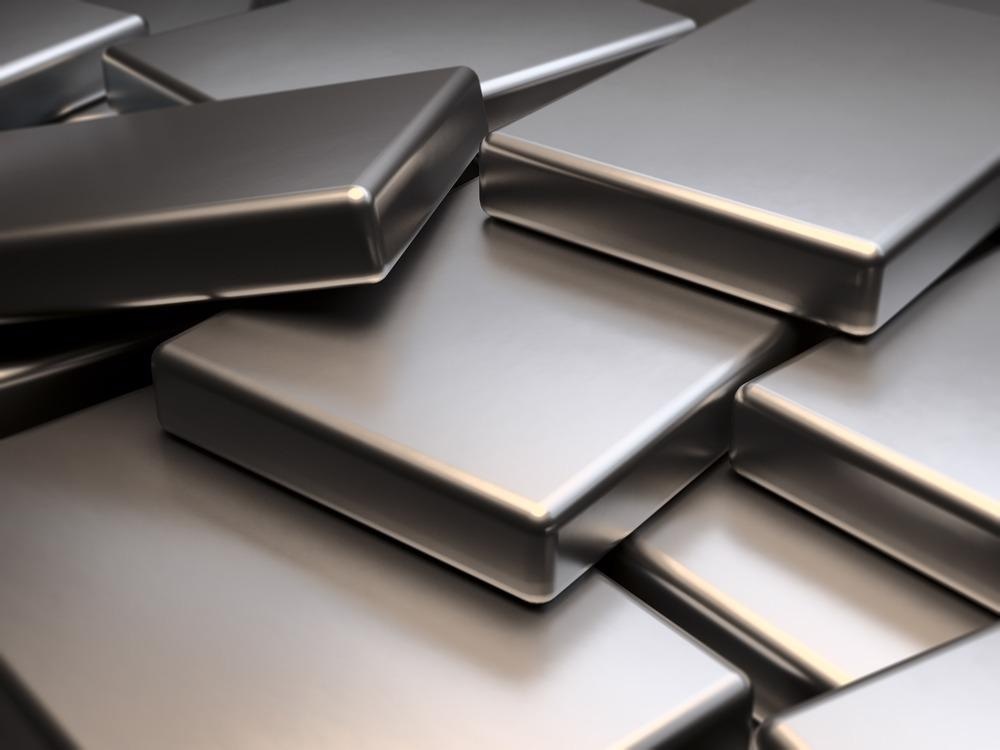The study of multiferroic materials has existed since the 1950s, with several key discoveries in recent years that have led to a rekindled interest in these materials. This article will provide a brief overview of multiferroic materials, their uses, and explore some new research into improving their properties using stress.

Image Credit: Zhazhin Sergey/Shutterstock.com
What are Multiferroic Materials?
Multiferroic (MF) materials are materials that have both magnetic and ferroelectric properties. They are particularly interesting to materials scientists as they allow the manipulation of magnetic properties by electrical fields. Different mechanisms such as geometric, lone-pair, spin-driven, and charge-ordering effects can support multiferroicity. The two types of order (magnetic and ferroelectric) have symmetry requirements that must be simultaneously satisfied by MF materials.
Ferroelectricity, ferromagnetism, and feroelasticity are the three main ferroic properties that MF materials exhibit more than one of in the same phase. Currently, the term is usually applied to describe magnetoelectric multiferroics that simultaneously display ferromagnetic and ferroelectric properties.
The definition can be expanded to include antiferromagnetic or ferrimagnetic materials. Other types of primary order have recently been proposed such as ferroic arrangements of magnetoelectric multipoles.
Key early discoveries in the field of MF materials include the discovery of ferroelectric polarization in epitaxially grown thin films of magnetic bismuth ferrite. Other key works include the discovery that hexagonal manganite YMnO3 displays unusual improper ferroelectricity compatible with the coexistence of magnetism.
Most multiferroic materials identified so far are transition-metal oxides. Many have a perovskite structure. Examples of currently identified multiferroics include BiFEO3, BaNiF4, CuO, ZnCr2Se4, and h-HoMnO3. MF materials can be fabricated via various routes, including hydrothermal synthesis, high-pressure solid-state synthesis, vacuum-based deposition, and sol-gel processing.
Potential Applications of Multiferroic Materials
Due to their unique properties, MF materials show potential for applications in a wide range of industries and research. They are being explored for use as actuators, switches, and magnetic field sensors. Many industries use these technologies currently, but there are limitations in the properties the materials demonstrate. Multiferroic materials can circumvent these limitations, improving the technologies significantly.
MF materials also show potential as novel types of electronic memory devices that can be electrically written and magnetically read. Multiferroic memory devices can offer properties such as non-destructive magnetic read operations and low-power, fast electrical write operations. In this respect, they combine the best properties of both MRAM and FeRAM devices. Several studies have proposed the use of MF films instead of capacitors as resistive memory elements.
Using Stress to Improve the Properties of MF Materials
Stress and pressure are known to change the physical and structural properties of many materials including crystals. External stimuli are used to create everyday products and technologies. Compressive and tensile strain is induced by stretching or compressing a material along its axes. When strain is applied to thin films on substrates, the film’s building blocks deform to fit match neighboring building blocks on the substrate.
Recent research published in the journal Nature Materials has demonstrated a method to enhance the electromechanical response of MF materials using anisotropic epitaxial stabilization. The research team used BiFEO3, one of the most popular materials in the field due to being one of the only known room-temperature MF materials. This material displays important functional properties such as piezoelectricity, ferroelectricity, and photovoltaic effects. It is also non-toxic.
Piezoelectric materials convert mechanical pressure into electricity, making them attractive materials for smartphone sensors and pacemakers.
Nicola Spaldin: The pioneer behind multiferroics
Video Credit: FRANCE 24 English/Youtube.com
Researchers from UNSW discovered a new exotic state, which has exciting implications for the future of multiferroics and future technologies that will utilize them. The new intermediate phase displays over double the value of the electromechanical figure of merit of usual phases.
Using an electric field, the team demonstrated the ability to transform between other phases and this new phase. This was achieved by using a careful balance of thickness, distortion, and thin-film strain.
The research team achieved a new phase in the material by using highly miscut substrates. The phase is essentially the link between the tetragonal-like and rhomboidal-like phases of BiFeO3. The miscut orientations were custom-made for the study. Much of the current research uses standard substrate orientations. The phase discovered in the research is easily manipulated by electric fields.
Whilst the research used BiFeO3, this theoretical and research-based approach can be easily applied to other perovskite oxides. The team is also exploring the effects of the high-index substrates on other materials, such as purely magnetic or ferroelectric materials. Other targets of research are oxide superlattices and the team aims to undertake further magnetic studies on the new low-symmetry phase.
The Future
The new phase discovered in the research has exciting implications for the future of multiferroics research and potential commercial applications of these intriguing materials. There is scope for research into nano-actuators and novel types of sensors, amongst many other applications.
Many piezoelectric materials used in sensors and actuators currently contain lead, which leads to issues with toxicity, which is especially problematic in biomedical applications. The research is still relatively niche, but it shows exciting potential.
Further Reading and More Information
Paull, O et al. (2021) Anisotropic epitaxial stabilization of a low-symmetry ferroelectric with enhanced electrochemical response [online] Nature Materials (2021) | nature.com. Available at:
https://doi.org/10.1038/s41563-021-01098-w
Scott. J.F. (2007) Data Storage: Multiferroic Materials [online] Nature Materials 6(4) pp. 256-7 | Researchgate.net. Available at:
https://www.researchgate.net/publication/6454680_Data_Storage_Multiferroic_Memories
Fiebig, M et al. (2016) The Evolution of Multiferroics [online] Nature Reviews Materials 1 Article no: 16046 | Nature.com. Available at:
https://doi.org/10.1038/natrevmats.2016.46
Disclaimer: The views expressed here are those of the author expressed in their private capacity and do not necessarily represent the views of AZoM.com Limited T/A AZoNetwork the owner and operator of this website. This disclaimer forms part of the Terms and conditions of use of this website.